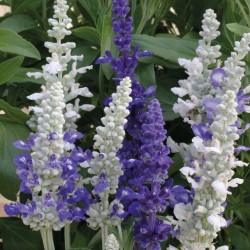Menu
-
MenuGeri
- Home
-
Kategoriler
-
-
Kategoriler
-
Sebze tohumları
-
Ülkelere Göre Çeşitler
- Ermenistan'dan çeşitler
- BH'den Çeşitler
- Hırvatistan'dan Çeşitler
- Fransa'dan Çeşitler
- Almanya'dan Çeşitler
- Yunanistan'dan Çeşitler
- Macaristan Çeşitleri
- Hindistan'dan Çeşitler
- İtalya'dan çeşitleri
- Japonya'dan Çeşitler
- Kuzey Makedonya çeşitleri
- Peru Çeşitleri
- Rusya'dan Çeşitler
- Sırbistan'dan Çeşitler
- Slovenya'dan Çeşitler
- İspanya Çeşitleri
- Tayland çeşitleri
- Türkiye'den Çeşitler
- ABD'den Çeşitler
- Domates tohumları
- Mısır tohumları
- Kabak ailesi
- Fasulye ailesi
- Salatalık tohumları
- Dolma biber tohumları
- Havuç ailesi
- Soğan ailesi
- Marul tohumları
- Patates ailesi
- Lahana ailesi
- Turp tohumları
- Pancar ailesi
- Karpuz tohumları
- Kavun tohumları
- Karnabahar tohumları
- Ayçiçeği ailesi
-
Ülkelere Göre Çeşitler
- Meyve tohumları
- Acı biber tohumları
- Tıbbi bitki tohumları
- Tırmanma bitki tohumları
- Ağaçlar - Çalı tohumları
- Palmiye tohumları
- Süs bitkileri tohumları
- Tütün tohumları
-
Sebze tohumları
-
-
-
-
- YENİ ÜRÜNLER
- Hesap oluştur
- Teslimat - Ödeme
- FAQ
Last Product Reviews
Out of the two seeds, one germinated and the other one was dead and floatin...
By
 Riikka H on 07/03/2024
Riikka H on 07/03/2024
Verified Purchase
23 adet ürün var.
Sıralama ölçütü:
Toplam 23 üründen 16-23 arası gösteriliyor
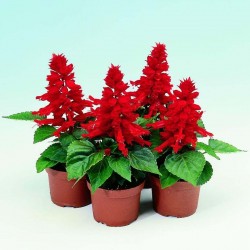
Scarlet Sage - Tropical...
Fiyat
€2,00
(SKU: F 23)
Seeds Gallery EU,
5/
5
<div id="idTab1" class="rte">
<h3><span style="font-size:14pt;"><strong>Scarlet Sage - Tropical Sage Seeds (Salvia splendens)</strong></span></h3>
<h3><span style="color:#ff0000;font-size:14pt;"><strong>Price for Package of 50 seeds.</strong></span></h3>
<div>Salvia splendens (Scarlet Sage, Tropical Sage) is a tender herbaceous perennial that is native to Brazil, growing at 2,000 to 3,000 m (6,600 to 9,800 ft) elevation where it is warm year-round and with high humidity. The native plant, rarely seen in cultivation, reaches 1.3 m (4.3 ft) tall. Smaller selections are very popular as bedding plants, seen in shopping malls and public gardens all over the world.</div>
<div>Taxonomy</div>
<div>S. splendens was first described and named in 1822. At that time it was given the common name Lee's Scarlet sage. Before the plant was selected to become dwarf in size, an early Dutch selection named 'Van Houttei' was chosen and is still popular in the horticulture trade.</div>
<div>Description</div>
<div>The native type is rarely used or described, though it grew from 1.5 to 8 m (4.9 to 26 ft) in height. The most common selections are the dwarf sizes that go by names such as 'Sizzler' and 'Salsa', and planted en masse in gardens and malls. 'Van Houttei' reaches 1 to 1.3 m (3.3 to 4.3 ft) in height. The various types typically have red flowers.</div>
<div>Named cultivars include S. splendens 'Alba', with white flowers; 'Atropurpurea', with dark violet to purple flowers; 'Atrosanguinea', flowers dark red; 'Bicolor', flowers white and red; 'Bruantii', small, with red flowers; 'Compacta', small, flowers in dense racemes, white or red; 'Grandiflora', large, with large red flowers; 'Issanchon', small, with white flowers striped pink to red; 'Nana', an early-flowering cultivar, with red blossoms; 'Scarlet Pygmy', a very dwarf, early flowering seed race with intense scarlet blossoms; 'Semperflorens', continuous flowering; 'Souchetii', small, with white or red flowers; 'St. John's Fire', dwarf plants with dense, abundant, bright red, early-flowering, long-lasting blossoms; and 'Violacea', flowers dark violet to purple. The cultivars 'Red arrow', 'Vanguard' and 'Van-Houttei' have gained the Royal Horticultural Society's Award of Garden Merit.</div>
</div>
F 23

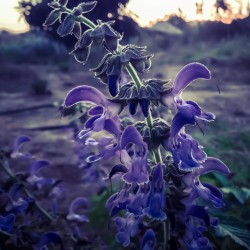
Kırmızı Adaçayı, Çin...
Fiyat
€1,95
(SKU: MHS 23)
Seeds Gallery EU,
5/
5
<h2><strong>Kırmızı Adaçayı, Çin Adaçayı Tohumları</strong></h2><h2><span style="color:#ff0000;"><strong>20 tohum paketi için fiyat.</strong></span></h2><p>Bu bitki, birçok dilde "kırmızı kökler" adını köklerinin kırmızımsı kahverengi rengine borçlu olan geleneksel Çin tıbbında (TCM) çok takdir edilen bir adaçayı türüdür. Geleneksel Çin tıbbında, kan dolaşımının kökü (tromboz) ve karaciğer problemlerini kullanır. Kök ayrıca bir anti-enflamatuar ve antioksidan etkiye sahiptir.</p>
MHS 23


Dev bitki (dev meyveli)
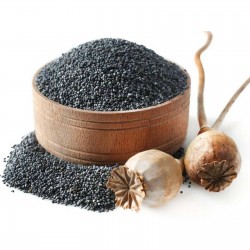
1000 ila 10000 tohum Haşhaş...
Fiyat
€3,50
(SKU: MHS 139)
Seeds Gallery EU,
5/
5
<h2><strong>1000 ila 5000 tohum Haşhaş (Papaver somniferum)</strong></h2>
<h2><span style="color: #ff0000;"><strong>2000 (1g), 4000 (2g), 10000 (5g) tohumlar için Paket Fiyatı.</strong></span></h2>
<p><strong>Haşhaş</strong> (<em>Papaver somniferum</em>), gelincikgiller familyasından <em>Papaver</em> cinsinden bir bitki türü. Haşhaş, yazların sıcak geçtiği orta derecede yağış alan yerleri sever. Anavatanının Doğu Akdeniz olduğu düşünülmektedir. Hindistan ve Anadolu'da çok eskiden beri tarımı yapılmaktadır.</p>
<p>Latince'de "Papaver" gelincik bitkisi, "somniferum" da uyku verici, rüya gördüren anlamına gelmektedir. Haşhaşın kapsülünden afyon adlı uyuşturucu, tohumlarından da haşhaş yağı adı verilen yenilebilir yağ çıkarılır.</p>
<p>Bitkinin meyvesi olan kapsülde, çok sayıda tohum bulunur. Haşhaş yağı, tohumların %40-45'ini meydana getirir. Haşhaş yağı, kaliteli, yemeklik, bitkisel bir yağdır. Tohumların yağı çıkartıldıktan sonra kalan küspe hayvan yemi olarak kullanılır ve hayvanın sütündeki yağ oranını arttırır. Meyve kabuğundan 20 kadar alkaloid elde edilir. Bunlar afyon türevleri olan; morfin, kodein, narkotin, papaverin gibi uyuşturucu olarak ve tıpta da ağrı kesici ve uyku verici kullanım alanı olan maddelerdir.</p>
<p>Birleşmiş Milletler denetiminde yasal ana üretici olarak Türkiye, Hindistan, Avustralya, Fransa, İspanya, Macaristan’da haşhaş ekimi yapılmaktadır. Ayrıca Türkiye ve Hindistan Birleşmiş Milletler tarafından geleneksel haşhaş üreticisi ülkeler olarak kabul edilmektedir. Ancak dünyada yasadışı olarak haşhaş üretiminde artış görülmektedir. Birleşmiş Milletler Uyuşturucu ve Suç Ofisi tarafından yapılan açıklamalarda Afganistan'da yapılan önleme çalışmalarına rağmen 200.000 hektarın üzerinde alanda haşhaş tarımı yapılmaya başlanmıştır.</p>
<h2>Özellikleri</h2>
<p>Haşhaş, hem yazlık hem de kışlık ekilebilen, otsu yapıda tek yıllık bir bitkidir. Yazlık ve kışlık ekiliş tarihine göre vejetasyon süresi 110-280 gün arasında değişmektedir. 30–100 cm kadar derinine inen kazık kök sistemine sahiptir. Yetişme yeri özelliklerine göre 30–170 cm kadar boylanabilirler. Bitkinin sapı ve dalları tüysüz, düz ve üzeri gri-yeşil bir mumsu tabakayla örtülüdür. Olgunlaştığında kahverengimsi sarı bir renk almaktadır. Yapraklarının üzeri tüysüz ve grimsi-yeşil bir mum tabakasıyla kaplıdır. Tohumun rengine göre; beyaz, viyole ve nadir olarak da kırmızı çiçek açmaktadırlar.</p>
<h2>Türkiye'de üretimi</h2>
<p>Türkiye'de 1933 yılında kurulan "Uyuşturucu Maddeler İnhisar İdaresi" tarafından kontrollü haşhaş ekimi ve üretimine geçilmiş olup daha sonra 1938 yılında kurulan Toprak Mahsulleri Ofisi’nin denetiminde üretimi devam etmiştir. 1971 yılına kadar afyon ve haşhaş tohumu amaçlı üretimi yapılırken, haşhaş kapsüllerinin çizilmesi suretiyle elde edilen afyon sakızı da üreticilerden Toprak Mahsulleri Ofisi tarafından satın alınmakta, işlenmekte ve daha sonra tıbbi amaçlı olarak ihraç edilmekteydi. 1971-1974 yılları arasında yasaklanan haşhaş üretimi, haşhaş kapsülünün çizilmesi ile elde edilen afyon üretiminin yasak olması kaydı ile çizilmemiş haşhaş kapsülü üretimi şeklinde devam etmiştir<sup>[2]</sup>.</p>
<p>Türkiye'nin Ege ve Orta Anadolu Bölgelerinde, başta en çok Afyonkarahisar olmak üzere Denizli, Konya, Uşak ve Burdur illerinde yetiştirilir<sup>[3]</sup>. Artvin Şavşat Balıklı köyü Yaylasında hiçbir uğraş vermeden kendi kendine yetiştiği bilinmektedir. Birleşmiş Milletler tarafından Türkiye'ye 700.000 dekar limit verilmiş olup günümüzde haşhaş ekimi yapılacak yerler; tarımsal ve ekonomik durum, yurtiçi uyuşturucu madde ihtiyacı, mevcut stok, kapsül ihtiyacı ve ihraç olanakları dikkate alınarak her yıl Bakanlar Kurulu kararıyla belirlenmektedir<sup>[4]</sup>. 2015 yılında Resmi Gazete'de yayımlanan "Haşhaş Kapsülü ve Tohumu Alımı ve Satımı Hakkında Karar" ile Afyonkarahisar, Uşak, Denizli, Amasya, Burdur, Çorum, Isparta, Kütahya, Tokat illerinin tamamında ve Balıkesir ilinin Balya, Bigadiç, Dursunbey, İvrindi, Kepsut, Savaştepe ve Sındırgı ilçeleri, Eskişehir ilinin Alpu, Beylikova, Çifteler, Günyüzü, Han, Mahmudiye, Mihalıççık, Seyitgazi ve Sivrihisar ilçeleri, Konya ilinin Ahırlı, Akören, Akşehir, Beyşehir, Derbent, Doğanhisar, Hüyük, Ilgın, Kadınhanı, Seydişehir, Tuzlukçu, Yalıhüyük ve Yunak ilçeleri, Manisa ilinin Şehzadeler, Yunusemre, Demirci, Gördes, Köprübaşı, Kula, Sarıgöl ve Selendi ilçelerinde yapılmaktadır<sup>[5]</sup>. Ürünlerin işlenmesi 1986 yılında kurulan "Afyon Alkaloidleri Fabrikası"nda yapılmaktadır.</p>
<h2><a href="https://www.seeds-gallery.shop/tr/ana-sayfa/1800000-fresh-seeds-1kg-organic-poppy-papaver-somniferum.html" target="_blank" title="Büyük paket Haşhaş Tohumu (1kg) BURADAN satın alınabilir" rel="noreferrer noopener">Büyük paket Haşhaş Tohumu (1kg) BURADAN satın alınabilir</a></h2>
MHS 139 (1g)

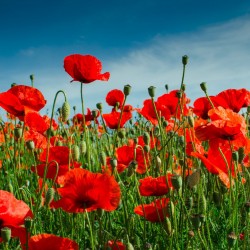
Gelincik (bitki) tohumu...
Fiyat
€2,05
(SKU: MHS 43 PR)
Seeds Gallery EU,
5/
5
<div id="idTab1" class="rte">
<h2><strong>Gelincik (bitki) tohumu (Papaver rhoeas)</strong></h2>
<h2><span style="color: #ff0000;"><strong>100 adet tohumluk paket fiyatıdır. </strong></span></h2>
<p style="color: #202122; font-size: 14px;"><b>Gelincik</b><span> </span>(<i>Papaver rhoeas</i>),<span> </span>gelincikgiller<span> </span>(Papaveraceae) familyasından Dünya'da çok geniş bir yayılma alanına sahip<span> </span>bir yıllık<span> </span>bir<span> </span>bitki<span> </span>türü.</p>
<p>25–60 cm arasında değişen yüksekliklere ulaşabilir.<span> </span>Yaprakları<span> </span>mavimsi yeşildir. Dip yapraklar uzun saplı, gövde yaprakları sapsız ve gövdeye bitişiktir.</p>
<p>Çiçeklerin<span> </span>genel rengi koyu kırmızıdır. Ancak beyaza kadar giden sarı, turuncu gibi değişik renkleri vardır.</p>
<p>Gelincik Temmuz ile Ağustos aylarında sabah saat beş buçuk ile on saatleri arasında tohum tozlarını (polen) yayar. Aynı saatlerde arılar ve diğer böcekler çiçeklere gelerek bu tozlara bulanırlar. Böylece, böceklerin beslenme saatleri ile bitkilerin tohum tozlarını yayma saatleri aynı zaman dilimine rastlamaktadır.</p>
<h2 style="color: #000000; font-size: 1.5em;"><span id="Kullan.C4.B1m.C4.B1"></span><span class="mw-headline" id="Kullanımı">Kullanımı</span></h2>
<p>Gelincik hafif bir yatıştırıcıdır. Özellikle<span> </span>taç yapraklarında<span> </span>rhoeadic ve papaveric asitler vardır. Tüm parçalar "rhoeadine" alkoloidi içerir.</p>
<p>Gelincik çiçeğinin yeşil aksamından,<span> </span>tohumlarından, ve kırmızı taç yapraklarından, petallerinden yararlanılır. Taç yapraklarından geleneksel olarak gelincik şerbeti yapılır.<span> </span>Bozcaada<span> </span>gelincik ve gelincikten elde edilen<span> </span>gelincik şerbeti<span> </span>ile ünlüdür.<br /><br /><span style="color: #202122; font-size: 14px;">Gelincik ismi geleneksel Türk gelinliklerinin kırmızı olmasından gelir. Kırmızı gelincikler küçük bir gelin olarak görülürler. Bir bölgede çok asker ölürse o bölgede gelincik çiçeğinin biteceğine inanılır. Gelincikler<span> </span></span>I. Dünya Savaşının<span style="color: #202122; font-size: 14px;"><span> </span>da en önemli sembollerindendir.</span><br /><br />Japonlar<span style="color: #202122; font-size: 14px;">, gelincik için şöyle der; ’Gelincik insan ömrü gibidir. Dünü vardır. Yaşamıştır. Bugünü vardır. Yaşıyordur. Ama yarını belli değildir’.</span></p>
</div>
<script src="//cdn.public.n1ed.com/G3OMDFLT/widgets.js"></script>
MHS 43 PR (100 S)

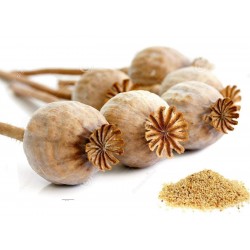
Common Garden White Poppy...
Fiyat
€3,50
(SKU: MHS 140)
Seeds Gallery EU,
5/
5
<div id="idTab1" class="rte">
<h2 class=""><strong>Common Garden White Poppy Seeds (Papaver Somniferum)</strong></h2>
<h2><span style="color: #ff0000;">Price for Package of 2000 (1g), 10000 (5g) seeds.</span></h2>
<p><span style="font-size: 10pt;">Papaver somniferum, the Opium poppy, is the species of plant from which opium and poppy seeds are derived. Opium is the source of many narcotics, including morphine (and its derivative heroin), thebaine, codeine, papaverine, and noscapine. The Latin botanical name means the "sleep-bringing poppy", referring to the sedative properties of some of these opiates.</span></p>
<p><span style="font-size: 10pt;">The opium poppy is the only species of Papaveraceae that is an agricultural crop grown on a large scale. Other species, Papaver rhoeas and Papaver argemone, are important agricultural weeds, and may be mistaken for the crop.</span></p>
<p><span style="font-size: 10pt;">It is also valuable for ornamental purposes, and has been known as the "common garden poppy", referencing all the group of poppy plants.</span></p>
<p><span style="font-size: 10pt;">Poppy seeds of Papaver somniferum are an important food item and the source of poppyseed oil, a healthy edible oil that has many uses.</span></p>
<p><span style="font-size: 10pt;"><strong>Description</strong></span></p>
<p><span style="font-size: 10pt;">Papaver somniferum is an annual herb growing to 100cm. All parts of the plant are strongly glaucous, giving a greyish-green appearance, and the stem and leaves are sparsely covered with coarse hairs. The leaves are lobed and clasp the stem at the base. The flowers are up to 120mm diameter, normally with four white, mauve or red petals, sometimes with dark markings at the base. The fruit is a hairless, rounded capsule topped with 12–18 radiating stigmatic rays. All parts of the plant exude white latex when wounded.</span></p>
<p><span style="font-size: 10pt;"> </span></p>
<p><span style="font-size: 10pt;"><strong>History</strong></span></p>
<p><span style="font-size: 10pt;">Use of the opium poppy predates written history. Images of opium poppies have been found in ancient Sumerian artifacts (circa 4000 BC). The making and use of opium was known to the ancient Minoans.[7] Its sap was later named opion by the ancient Greeks, from whence it gained its modern name of opium.</span></p>
<p><span style="font-size: 10pt;">Opium was used for treating asthma, stomach illnesses, and bad eyesight.</span></p>
<p><span style="font-size: 10pt;">The First and Second Opium Wars among China, the British Empire and France took place in the late 1830s through the early 1860s, when the Chinese attempted to stop western traders smuggling opium into their country.</span></p>
<p><span style="font-size: 10pt;">Many modern writers, particularly in the 19th century, have written on the opium poppy and its effects, notably Thomas de Quincey in Confessions of an English Opium Eater</span></p>
<p><span style="font-size: 10pt;">The French Romantic composer Hector Berlioz used opium for inspiration, subsequently producing his Symphonie Fantastique. In this work, a young artist overdoses on opium and experiences a series of visions of his unrequited love.</span></p>
<p><span style="font-size: 10pt;">Opium poppies (flower and fruit) appear on the coat of arms of the Royal College of Anaesthetists.</span></p>
<p><span style="font-size: 10pt;"><strong><em>Legality</em></strong></span></p>
<p><span style="font-size: 10pt;"> Opium poppy cultivation in the United Kingdom does not require a license, but extracting opium for medicinal products does.</span></p>
<p><span style="font-size: 10pt;"> In Italy, it is forbidden to grow P. somniferum to extract the alkaloids, but small numbers of specimens can be grown without special permits for purely ornamental purposes.</span></p>
<p><span style="font-size: 10pt;"> Unlike in its neighbour countries Austria and Switzerland, where opium poppy is still cultivated legally, it has been delegalized in Western Germany after World War II, extending this regulation after German reunification in 1990 also to territories of former GDR, where opium poppy cultivation had remained legal until then.</span></p>
<p><span style="font-size: 10pt;"> In the United Arab Emirates, where the drug law is especially stern, at least one man was reported to have been imprisoned for possessing poppy seeds obtained from a bread roll.[9]</span></p>
<p><span style="font-size: 10pt;"> In New Zealand, section 9(4) of the Misuse of Drugs Act states, "It shall be a defence to a charge under subsection (1) [Cultivation of prohibited plants] if the person charged proves that the prohibited plant to which the charge relates was of the species Papaver somniferum, and that it was not intended to be a source of any controlled drug or that it was not being developed as a strain from which a controlled drug could be produced."</span></p>
<p><span style="font-size: 10pt;"> In northern Burma, opium bans have ended a century-old tradition of growing poppy. Between 20,000 and 30,000 ex-poppyfarmers left the Kokang region as a result of the ban in 2002.[11] People from the Wa region, where the ban was implemented in 2005, fled to areas where growing opium is still possible.</span></p>
<p><span style="font-size: 10pt;"> In the United States, opium is listed as a Schedule II controlled substance by the Drug Enforcement Administration. In addition, "Opium poppy and poppy straw" are also prohibited.[12] However, this is not typically enforced for poppies grown or sold for ornamental or food purposes.[4] Though the opium poppy is legal for culinary or æsthetic reasons, poppies were once grown as a cash crop by farmers in California; the law of poppy cultivation in the United States is somewhat ambiguous.</span></p>
<p><span style="font-size: 10pt;">The reason for the ambiguity is because The Opium Poppy Control Act of 1942 (now repealed),[14][15][16] stated that any opium poppy should be declared illegal, even if the farmers were issued a state permit. § 3 of The Opium Poppy Control Act stated:</span></p>
<p><span style="font-size: 10pt;"> It shall be unlawful for any person who is not the holder of a license authorizing him to produce the opium poppy, duly issued to him by the Secretary of the Treasury in accordance with the provisions of this Act, to produce the opium poppy, or to permit the production of the opium poppy in or upon any place owned, occupied, used, or controlled by him.</span></p>
<p><span style="font-size: 10pt;">This led to the Poppy Rebellion, and to the Narcotics Bureau arresting anyone planting opium poppies and forcing the destruction of poppy fields of anyone who defied the prohibition of poppy cultivation. Though the press of those days favored the Federal Bureau of Narcotics, the state of California supported the farmers who grew opium poppies for their seeds for uses in foods such as poppyseed muffins. Today, this area of law has remained vague and remains somewhat controversial in the United States. The Opium Poppy Control Act of 1942 was repealed on 27 October 1970.</span></p>
<p><span style="font-size: 10pt;"> The seeds themselves contain very small amounts of opiates,[4] and have no measurable narcotic effect in small quantities. See poppy tea. However, the television show MythBusters demonstrated that one could test positive for narcotics after consuming four poppy seed bagels. On the show Brainiac: Science Abuse, subjects tested positive after eating only two poppy seed bagels.</span></p>
<p><span style="font-size: 10pt;"><strong>Medicine</strong></span></p>
<p><span style="font-size: 10pt;">Australia (Tasmania), Turkey and India are the major producers of poppy for medicinal purposes and poppy-based drugs, such as morphine or codeine.[23] The USA has a policy of sourcing 80% of its narcotic raw materials from the traditional producers, India and Turkey.</span></p>
<p><span style="font-size: 10pt;">A recent initiative to extend opium production for medicinal purposes called Poppy for Medicine was launched by The Senlis Council which proposes that Afghanistan could produce medicinal opium under a scheme similar to that operating in Turkey and India.[25] The Council proposes licensing poppy production in Afghanistan, within an integrated control system supported by the Afghan government and its international allies, to promote economic growth in the country, create vital drugs and combat poverty and the diversion of illegal opium to drug traffickers and terrorist elements. Interestingly, Senlis is on record advocating reintroduction of poppy into areas of Afghanistan, specifically Kunduz, which has been poppy free for some time.</span></p>
<p><span style="font-size: 10pt;">The Senlis proposal is based in part on the assertion that there is an acute global shortage of opium poppy-based medicines some of which (morphine) are on the World Health Organisation's list of essential drugs as they are the most effective way of relieving severe pain. This assertion is contradicted by the International Narcotics Control Board (INCB), the "independent and quasi-judicial control organ monitoring the implementation of the United Nations drug control conventions". INCB reports that the supply of opiates is greatly in excess of demand.</span></p>
<p><span style="font-size: 10pt;">In March 2010, researchers from the Department of Biological Sciences at the University of Calgary published an article in Nature Chemical Biology about their discovery of two enzymes and their encoding genes, thebaine 6-O-demethylase (T6ODM) and codeine O-demethylase (CODM), involved in morphine biosynthesis derived from the opium poppy.[27] The enzymes were identified as non-heme dioxygenases, and were isolated using functional genomics.[27] Codeine O-demethylase produces the enzyme that converts codeine into morphine.</span></p>
<p><span style="font-size: 10pt;"><strong>Medical cultivation in the UK</strong></span></p>
<p><span style="font-size: 10pt;">In late 2006, the British government permitted the pharmaceutical company Macfarlan Smith (a Johnson Matthey company, FTSE 100) to cultivate opium poppies in England for medicinal reasons[29] after Macfarlan Smith's primary source, India, decided to increase the price of export opium latex. This move is well received by British farmers,[citation needed] with a major opium poppy field based in Didcot, England. As of 2012, they were growing in Dorset, Hampshire, Oxfordshire and Lincolnshire as a spring-sown breakcrop recognised under the single payment scheme farm subsidy.[30] The Office of Fair Trading has alerted the government to their monopoly position on growing in the UK and worldwide production of diamorphine and recommended consideration.[29] The governments response advocated the status quo, being concerned interference might cause the company to stop production.</span></p>
<p><span style="font-size: 10pt;"><strong>Use as food</strong></span></p>
<p><span style="font-size: 10pt;">The opium poppy is the source of two food ingredients: poppy seed and poppyseed oil. The seeds contain very low levels of opiates,[4] and the oil extracted from them contains even less. Both the oil and the seed residue also have commercial uses.</span></p>
<p><span style="font-size: 10pt;"><strong>Poppy seeds</strong></span></p>
<p><span style="font-size: 10pt;">Poppy seeds are commonly used in cuisine from many different cultures. They can be dry roasted and ground to be used in wet curry (curry paste) or dry curry. They have a creamy and nut-like flavor, and when used with ground coconut, the seeds provide a unique and flavour-rich curry base.</span></p>
<p><span style="font-size: 10pt;"><strong>Ornamental cultivation</strong></span></p>
<p><span style="font-size: 10pt;">Once known as the "common garden poppy", live plants and seeds of the opium poppy are widely sold by seed companies and nurseries in most of the western world, including the United States. Poppies are sought after by gardeners for the vivid coloration of the blooms, the hardiness and reliability of the poppy plants, the exotic chocolate-vegetal fragrance note of some cultivars, and the ease of growing the plants from purchased flats of seedlings or by direct sowing of the seed. Poppy seed pods are also sold for dried flower arrangements.</span></p>
<p><span style="font-size: 10pt;">Since "opium poppy and poppy straw" are listed in Schedule II of the United States' Controlled Substances Act, a DEA license may be required to grow poppies in ornamental or display gardens. In fact, the legal status of strictly ornamental poppy gardens is more nuanced, and destruction of ornamental poppy installations or prosecution of gardeners (except those caught extracting opium via capsule scarification or tea extraction) are virtually unheard of.[4] During the early spring, opium poppies can be seen flowering in gardens throughout North America and Europe, and beautiful displays are found in many private planters, as well as in public botanical and museum gardens (e.g., United States Botanical Garden, Missouri Botanical Garden, North Carolina Botanical Garden).</span></p>
<p><span style="font-size: 10pt;">Many countries grow the plants, and some rely heavily on the commercial production of the drug as a major source of income. As an additional source of profit, the seeds of the same plants are sold for use in foods, so the cultivation of the plant is a significant source of income. This international trade in seeds of P. somniferum was addressed by a UN resolution "to fight the international trade in illicit opium poppy seeds" on 28 July 1998.</span></p>
<p><span style="font-size: 10pt;"><strong>Popular culture</strong></span></p>
<p><span style="font-size: 10pt;">In the 19th century Thomas de Quincey wrote Confessions of an English Opium-Eater (1821). A book on Opium and allegedly the first book in the series of drug-addiction literature.</span></p>
<p><span style="font-size: 10pt;">Recently, a feature film entitled The Opium Eater was released exploring the life of Eric Detzer and how he would go about acquiring opium poppies from flower shops and gardens in the Pacific Northwest (north of Seattle) to feed his addiction. This true story is based on an autobiography, Poppies: Odyssey of an Opium Eater written by Detzer, and starring David Bertelsen. Since the festival release of this film in Breckenridge, CO, eBay has stopped allowing the sale of opium poppy pods on their auction site. This may also be attributed to the death of a Colorado teen, who overdosed on opium tea around the same time.</span></p>
<p><span style="font-size: 10pt;">What may be the most well known literary use of the poppy occurs both in L. Frank Baum's The Wonderful Wizard of Oz and in MGM's classic 1939 film based on the novel.</span></p>
<p><span style="font-size: 10pt;">In the novel, while on their way to the Emerald City, Dorothy, the Scarecrow, the Tin Man, and the Cowardly Lion walk through a field of poppies, and both Dorothy and the Lion mysteriously fall asleep. The Scarecrow and the Tin Man, not being made of flesh and blood, are unaffected. They carry Dorothy to safety and place her on the ground beyond the poppy field. While they are considering how to help the Lion, a field mouse runs in front of them, fleeing a cougar. The Tin Man beheads the cougar with his axe, and the field mouse pledges her eternal gratitude. Being the Queen of the Field Mice, she gathers all her subjects together. The Tin Man cuts down several trees, and builds a wagon. The Lion is pushed onto it, and the mice pull the wagon safely out of the poppy field.</span></p>
<p><span style="font-size: 10pt;">In the 1939 film, the sequence is considerably altered. The poppy field is conjured up by the Wicked Witch of the West, and it appears directly in front of the Emerald City, preventing the four travelers from reaching it. As in the novel, Dorothy and the Cowardly Lion fall asleep, but in a direct reversal of the book, the Scarecrow and the Tin Man are unable to carry Dorothy. Glinda, who has been watching over them, conjures up a snowfall which kills the poppies' narcotic power and enables Dorothy and the Lion to awaken. Unfortunately, the Tin Man has been weeping in despair, and the combination of his tears and the wet snow has caused him to rust. After he is oiled by Dorothy, the four skip happily toward the Emerald City.</span></p>
<p><span style="font-size: 10pt;">In Baum's other Oz books, Oz's ruler, Princess Ozma, is often shown wearing poppies in her hair as decoration.</span></p>
</div><script src="//cdn.public.n1ed.com/G3OMDFLT/widgets.js"></script>
MHS 140 (1g)


Bu ürüne PayPal veya Kart ile ödeme yapılamaz

Shirley Poppy Seeds Mixed...
Fiyat
€1,95
(SKU: MHS 43)
Seeds Gallery EU,
5/
5
<div id="idTab1" class="rte">
<h2><strong>Shirley Poppy Seeds Mixed Colors, Decorative, Ornamental</strong></h2>
<h2><span style="color: #ff0202;"><strong>Price for a Package of 200 seeds.</strong></span></h2>
<p>Shirley Poppy (Papaver Rhoeas) - The Shirley Poppy comes from Shirley, England, where in the 1880s, a local vicar carefully selected and hybridized Poppies in his own wild flower garden. Over many years he obtained a strain of Poppies ranging in colors from white to pale lilac to pink and red, and unlike the wild Poppies these had no dark blotches at the base of the petals. Over the years, further wildflower Poppy selection has created the semi-double and double forms, as well as flowers with a ring of contrasting color around the edge called the picotee form. Easily grown from Shirley Poppy seeds, gardeners enthusiastically grow this variety for the wonderful display of diverse color and forms. How to Grow Poppies: Directly sow Poppy seeds in early spring before frosts have finished. Shirley Poppies grow best in loose soil that drains well. Press the flower seeds firmly into the soil and keep the soil moist until germination.<br /><br />Flower Specifications<br /><br /> Season: Annual<br /> USDA Zones: 3 - 9<br /> Height: 12 - 15 inches<br /> Bloom Season: Summer<br /> Bloom Color: Mix<br /> Environment: Full sun<br /> Soil Type: Loose, well-drained, pH 6.1 - 7.3<br /> Deer Resistant: Yes<br /><br />Planting Directions<br /><br /> Temperature: 55 - 60F<br /> Average Germ Time: 21 - 28 days<br /> Light Required: Yes<br /> Depth: Do not cover the seed but press into the soil<br /> Moisture: Keep seeds moist until germination<br /> Plant Spacing: 12 inches</p>
</div>
MHS 43 (200 S)

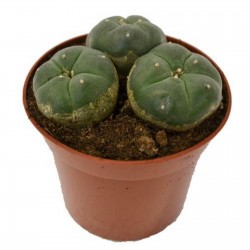
Peyote tohumu (Lophophora...
Fiyat
€2,85
(SKU: CT 2)
Seeds Gallery EU,
5/
5
<h2><strong>Peyote tohumu (Lophophora williamsii)</strong></h2>
<h2><span style="color: #ff0000;"><strong>5 tohum paketi için fiyat.</strong></span></h2>
<p><i><b>Lophophora williamsii</b></i><span> </span>veya<span> </span><b>peyote,</b><span> </span>meskalin<span> </span>ve benzeri<span> </span>psikoaktif alkaloidleri<span> </span>içeren küçük ve dikensiz bir<span> </span>kaktüs<span> </span>türü.<span> </span><i>Peyote</i><span> </span>Nahuatl<span> </span>veya Aztek dilindeki<span> </span><i><b>peyōtl</b></i><span> </span>kelimesinden türetilmiş İspanyolca bir kelimedir ve "parıltılı" anlamına gelir.</p>
<p>Peyote<span> </span>Meksika'ya ve güneybatı<span> </span>Teksas'a özgüdür. Özellikle<span> </span>Chihuahuan Çölü'nde ve<span> </span>Coahuila,<span> </span>Nuevo León,<span> </span>Tamaulipas<span> </span>ve<span> </span>San Luis Potosi<span> </span>eyaletlerinde bulunur. Mart-Mayıs ayları arasında çiçeklenir, ancak bazen Eylül ayına kadar da çiçeklenme görülebilir. Çiçekler<span> </span>tigmotaktik<span> </span>anterlerlere sahiptir ve<span> </span>pembe<span> </span>rengindedir (<i>Opuntia</i><span> </span>gibi).</p>
<p>Tüketildiğinde<span> </span>psikoaktif<span> </span>etkilere neden olan peyote,<span> </span>Kuzey Amerikalı yerliler<span> </span>tarafından uzun bir dini ve<span> </span>tıbbi<span> </span>kullanım geçmişine sahiptir. Peyote,<span> </span>halüsinojen<span> </span>bir madde olan<span> </span>meskalin<span> </span>içerir.</p>
<h2><span class="mw-headline" id="Coğrafi_dağılım_ve_yaşam_alanı">Coğrafi dağılım ve yaşam alanı</span></h2>
<p><i>L. williamsii</i>, çoğunlukla<span> </span>Meksika<span> </span>gibi<span> </span>Kuzey Amerika’nın<span> </span>güney kısımlarına özgüdür. Amerika Birleşik Devletleri'nde ise Güney<span> </span>Teksas'ta<span> </span>yetişir. Meksika'da kuzeydeki<span> </span>Chihuahua,<span> </span>Coahuila,<span> </span>Nuevo León<span> </span>ve<span> </span>Tamaulipas<span> </span>eyaletlerinde yetişen kaktüs<span> </span>San Luis Potosi<span> </span>ve<span> </span>Zacatecas'a<span> </span>kadar yayılmıştır.<sup id="cite_ref-3" class="reference">[3]</sup><sup id="cite_ref-4" class="reference">[4]</sup><sup id="cite_ref-5" class="reference">[5]</sup></p>
<p>Genellikle 100 ila 1.500 m rakımlarında yetişen bitki,<span> </span>Chihuahuan çölünde<span> </span>istisnai olarak 1.900 metre yüksekliğe kadar dağılım gösterir. Kurak ve sıcak çöl bölgelerinde yaşamasına rağmen kaktüs aynı zamanda Tamaulipas'ın ılıman iklimi içinde de mevcuttur. Kaktüsler,<span> </span>kireçtaşı<span> </span>tepelerinde veya bu tepelerin yakınlarında yaygınlık gösterir.<sup id="cite_ref-flora2_6-0" class="reference">[6]</sup></p>
<h2><span id="Kullan.C4.B1m"></span><span class="mw-headline" id="Kullanım">Kullanım</span></h2>
<h3><span id="Psikoaktif_kullan.C4.B1m"></span><span class="mw-headline" id="Psikoaktif_kullanım">Psikoaktif kullanım</span></h3>
<div role="note" class="hatnote navigation-not-searchable">Ana madde:<span> </span>Meskalin</div>
<p>Psikoaktif<span> </span>özellikleri için kullanıldığında, saf meskalin için yaygın doz kabaca 200 ila 400 mg arasındadır. Bu doz yaklaşık olarak 10 ila 20 gram kurutulmuş peyoteye eşdeğerdir. Bununla birlikte bitkinin etki gücü, kaktüsten kaktüse önemli ölçüde farklılık gösterir ve bu durum dozajların doğru ölçülmesini zorlaştırır. Etkiler yaklaşık 10 ila 12 saat sürer. Peyote'nin görsel veya işitsel algıyı etkilediği (bkz.<span> </span>sinestezi) ve halüsinasyonlara neden olduğu bildirilmektedir.<sup id="cite_ref-fp2_7-0" class="reference"></sup><sup id="cite_ref-bbr2_8-0" class="reference"></sup></p>
<h3><span id="T.C4.B1bbi_kullan.C4.B1m"></span><span class="mw-headline" id="Tıbbi_kullanım">Tıbbi kullanım</span></h3>
<p>Psikoaktif kullanımının yanı sıra bazı Kızılderili kabileleri, şifalı özelliklere sahip olabileceği inancıyla; diş ağrısı, doğum ağrısı,<span> </span>ateş, meme ağrısı, cilt hastalıkları,<span> </span>romatizma,<span> </span>diyabet, soğuk algınlığı ve körlük gibi çeşitli rahatsızlıkları tedavi etmek için peyote kullanır.<sup id="cite_ref-poisoning2_9-0" class="reference">[9]</sup></p>
<h2><span id="K.C3.BClt.C3.BCrel_.C3.B6nem"></span><span class="mw-headline" id="Kültürel_önem">Kültürel önem</span></h2>
<h3><span id="Huichol_k.C3.BClt.C3.BCr.C3.BC"></span><span class="mw-headline" id="Huichol_kültürü">Huichol kültürü</span></h3>
<p>Huichol dini Mısır, Mavi Geyik, Peyote ve Kartal olmak üzere dört ana<span> </span>tanrıdan<span> </span>oluşur. Tanrıların hepsinin Güneş Tanrısından (Tao Jreeku) doğduna inanılır.</p>
CT 2 (5 S)





